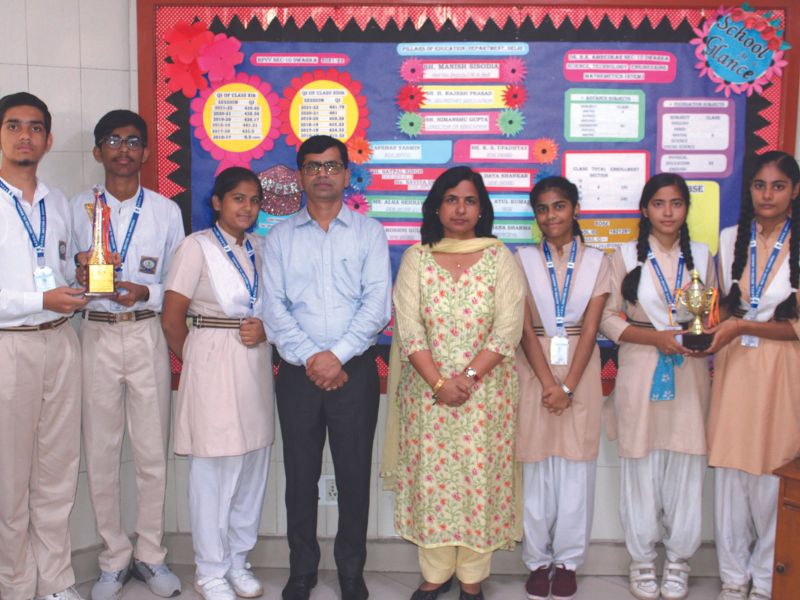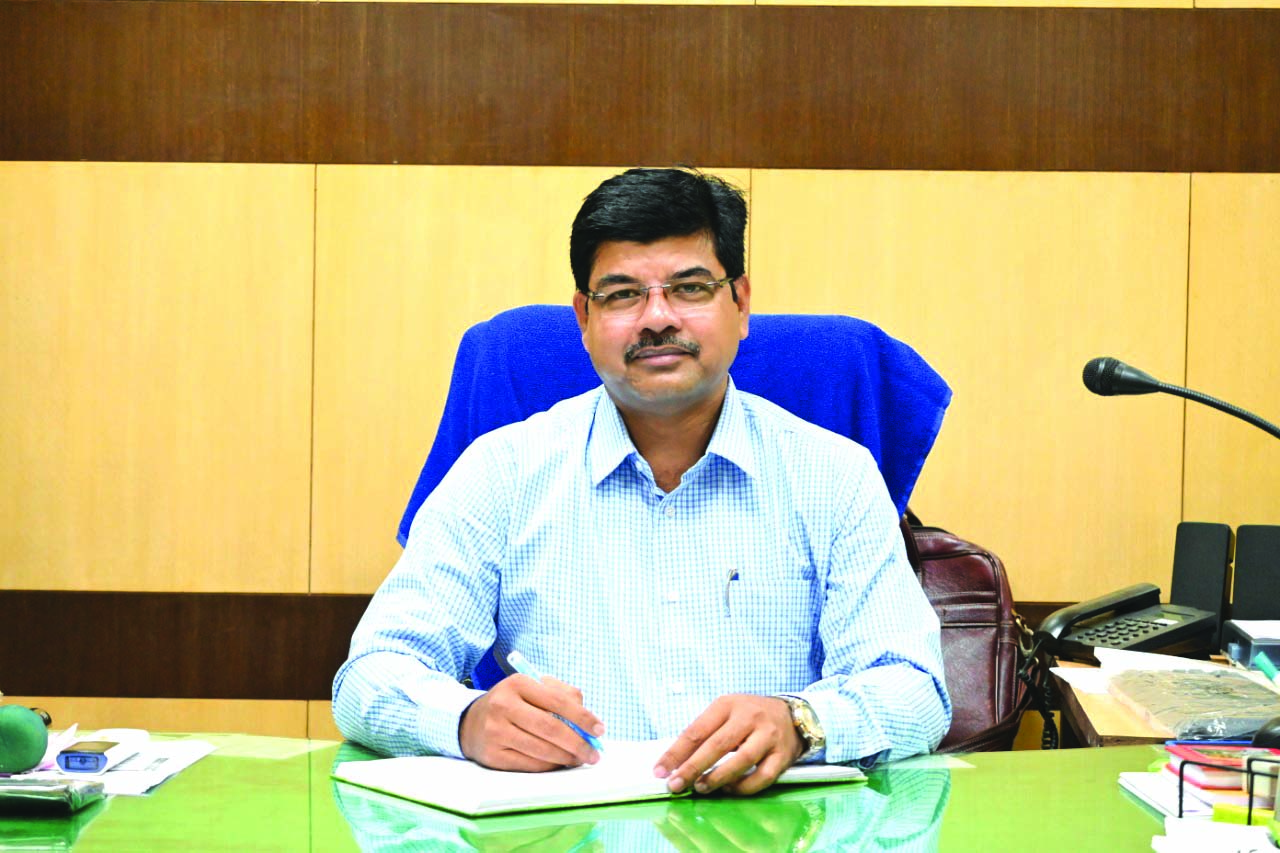For state government schools, subject to relentless criticism by educationists, academia and media, a separate league table has been introduced this year to encourage them to upgrade and improve, writes Paromita Sengupta & Reshma Ravishanker

RPVV, Dwarka’s Dr. Atul Kumar (centre left)
The overwhelming majority of the country’s 1.30 million government schools which have earned global notoriety for dilapidated infrastructure, chronic teacher truancy, multi-grade teaching and rock-bottom learning outcomes, are owned and managed by India’s 29 states, seven Union territories and/ or numerous local, municipal and other governments. Contrary to popular belief, the Central government has established and manages less than 5,000 primary-secondary schools such as the Kendriya Vidyalayas (KVs) and Jawahar Navodaya Vidyalayas (JNVs). Schools promoted and managed by the defence services, Indian Railways and several public sector enterprises are generally classified as Central government schools.
It’s substantially true that Central Government schools (and higher education institutions) tend to be relatively well-funded, well-administered and ensure acceptable student learning outcomes. Therefore, much of the volley of relentless criticism against government schools by educationists, academia and media (including EducationWorld) is directed at state and local government schools which tend to be under-funded, negligently administered and sabotaged by teacher recruitment scams, examination malpractices and chronic corruption.
However, even if belatedly, some governments — especially the Aam Aadmi Party (AAP) of Delhi state which has discovered that public education is an elections winning issue — are initiating primary-secondary education reforms. This is a socially beneficial development that promises to upgrade public education across the spectrum.
[userpro_private restrict_to_roles=
Therefore to provide further encouragement to state government schools to reform and improve, this year your editors and our EWISR partner, the Delhi-based research and opinion polls company C fore, have introduced segregated league tables for Central and state government day schools. To compile India’s top state government day schools league table, C fore surveyors constituted a special sample respondents group comprising 1,279 SEC (socioeconomic category) ‘B’, ‘C’ and ‘D’ respondents across the country.
Unsurprisingly, India’s top-ranked state government schools in EWISR 2022-23 league tables are Rajkiya Pratibha Vikas Vidyalaya (RPVV), Sector 10, Dwarka, Delhi and RPVV, Yamuna Vihar managed by Delhi state’s AAP government. With top scores under the parameters of teacher competence, welfare and development, academic reputation, leadership/management quality, parental involvement, mental and emotional well-being services, and value for money. RPVV, Dwarka has maintained its #1 rank attained in the composite government schools league table of 2021-22.
The two Delhi state government schools are followed by the Kerala government’s celebrated Government Vocational Higher Secondary School for Girls, Nadakkavu, Kozhikode at #3 (cf. #4 in 2021-22), followed by the Bombay Municipal Corporation’s Worli Seaface Mumbai Public English School #4 (5) and the Odisha Adarsha Vidyalaya, Hatiota #5 (10).
“It’s a great honour to be ranked India’s #1 government day school. We are delighted that we have maintained last year’s #1 rank in the all-government — Central plus state schools league table. The entire RPVV, Dwarka fraternity including guards and sanitation workers are celebrating. I believe the autonomy given to our teachers, collaboration of all stakeholders, academic integrity, self-assessment by learners and a sense of belonging among stakeholders is the secret of our success. It’s important to note that we are confronted with stiff competition as Dwarka is the hub of 200 elite schools. Yet, we are overwhelmed with admission applications from low and high income households. Moreover, RPVV, Dwarka which was a classes VI-XII school has recently been designated a classes IX-XII school of special excellence by the state government,” says Dr. Atul Kumar, a Sanskrit and business management postgrad of Benaras Hindu and Symbiosis (Pune) universities and head of school at RPVV, Dwarka. Currently the school hosts 385 students and 42 teachers on its muster rolls.
With Central government schools transferred to a separate, discrete league table and ranked inter se, almost all sufficiently well-known state government schools have been awarded big promotions by this year’s sample respondents. Among them: Jadavpur Vidyapith, Kolkata ranked #6 (13); Government Model Sr. Sec School, Manimajra, Chandigarh #7 (9); Government Model Sr. Sec School, Sector 16, Chandigarh #8 (11); Rajkiya Pratibha Vikas Vidyalaya, Surajmal Vihar, Delhi #10 (12); Ramakrishna Paramhansa Mumbai Public Marathi School, Bandra #11 (19); Zilla Parishad Marathi Higher Primary School, Warkhed, Buldhana #13 (18) and Government Model Sr. Sec School, Sector 35, Chandigarh #14 (17). Two new schools — Model School, TT Nagar, Bhopal and Government Middle School, Taknak, Sakti — have debuted at #9 and #15.

Jadavpur Vidyapith’s Partha Pratim Baidya
Partha Pratim Baidya, headmaster, Jadavpur Vidyapith, Kolkata (JVK), is enthused about the school’s promotion from #13 in 2021-22 to #6 this year. “We are grateful to EW for recognising the commitment and perseverance of our teachers who have enabled our students to recover the learning loss of the Covid-19 pandemic. They ensured that our transition to online teachinglearning during the lockdown period was quite seamless. Moreover after the pandemic, our teachers have persevered beyond the call of duty to assist students to fill learning gaps and prepare for board exams. As a result our students from low income households have done us proud by averaging 86 percent in state board exams.” says Baidya. Currently, JVK hosts 1,677 students mentored by 55 teachers.
For full list, please visit:EW India School Rankings 2022-23 – Top & best schools in India
[/userpro_private]












Add comment